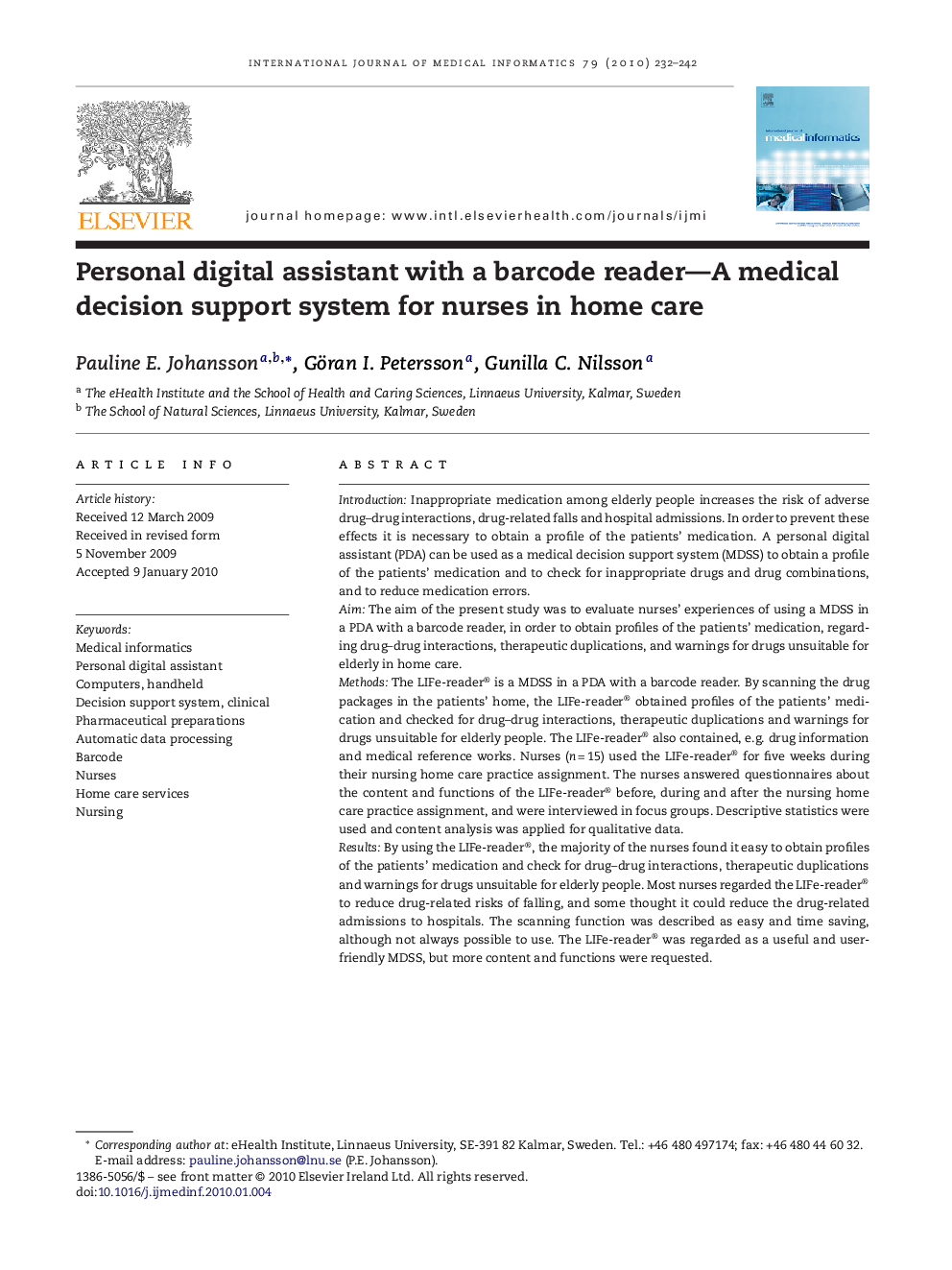| Article ID | Journal | Published Year | Pages | File Type |
|---|---|---|---|---|
| 516989 | International Journal of Medical Informatics | 2010 | 11 Pages |
IntroductionInappropriate medication among elderly people increases the risk of adverse drug–drug interactions, drug-related falls and hospital admissions. In order to prevent these effects it is necessary to obtain a profile of the patients’ medication. A personal digital assistant (PDA) can be used as a medical decision support system (MDSS) to obtain a profile of the patients’ medication and to check for inappropriate drugs and drug combinations, and to reduce medication errors.AimThe aim of the present study was to evaluate nurses’ experiences of using a MDSS in a PDA with a barcode reader, in order to obtain profiles of the patients’ medication, regarding drug–drug interactions, therapeutic duplications, and warnings for drugs unsuitable for elderly in home care.MethodsThe LIFe-reader® is a MDSS in a PDA with a barcode reader. By scanning the drug packages in the patients’ home, the LIFe-reader® obtained profiles of the patients’ medication and checked for drug–drug interactions, therapeutic duplications and warnings for drugs unsuitable for elderly people. The LIFe-reader® also contained, e.g. drug information and medical reference works. Nurses (n = 15) used the LIFe-reader® for five weeks during their nursing home care practice assignment. The nurses answered questionnaires about the content and functions of the LIFe-reader® before, during and after the nursing home care practice assignment, and were interviewed in focus groups. Descriptive statistics were used and content analysis was applied for qualitative data.ResultsBy using the LIFe-reader®, the majority of the nurses found it easy to obtain profiles of the patients’ medication and check for drug–drug interactions, therapeutic duplications and warnings for drugs unsuitable for elderly people. Most nurses regarded the LIFe-reader® to reduce drug-related risks of falling, and some thought it could reduce the drug-related admissions to hospitals. The scanning function was described as easy and time saving, although not always possible to use. The LIFe-reader® was regarded as a useful and user-friendly MDSS, but more content and functions were requested.ConclusionsWe found that the LIFe-reader® has the potential to be a useful and user-friendly MDSS for nurses in home care when obtaining profiles of the patients’ medication regarding drug–drug interactions, therapeutic duplications and warnings for drugs unsuitable for elderly. A regular scanning of the patients’ drugs in their home might support nurses and general practitioners (GPs) in reducing the inappropriate use of drugs. If the LIFe-reader® should be used in a larger scale among nurses, more content and functions are necessary.
